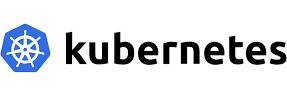Kubernetes Cluster Autoscaler is one of the 3 autoscaling functionalities in K8s. Read on to find out more.
At Bobcares, we offer solutions for every query, big and small, as a part of our Server Management Services.
Let’s take a look at how our Support Team helped our customers with learning more about Kubernetes Cluster Autoscaler.
About Kubernetes Cluster Autoscaler
Kubernetes or K8s offer three autoscaling functionalities, namely, Vertical Pod Autoscaler, Horizontal Autoscaler, and Cluster Autoscaler.
- Horizontal Pod Autoscaler (HPA): It sets the number of replicas of an application.
- Vertical Pod Autoscaler (VPA): It sets the resource requests as well as limits of a container.
- Cluster Autoscaler (CA): It sets the number of nodes in the cluster when nodes are underutilized or when pods fail to schedule.
According to our Support Team, VPA and HPA operate at the pod level, whereas Cluster Autoscaler functions at the cluster level.

In fact, understanding Kubernetes Cluster Autoscaler plays an important role in ensuring we get the most out of our Kubernetes platform.
Cluster Autoscaler or CA is responsible for adding or removing nodes in a cluster according to the resource requests from the pods. Furthermore, the CA does not measure the CPU and memory usage values directly in order to make a scaling decision.
In fact, every ten seconds CA checks for pods in pending state, which indicates that the schedule failed to assign the pods to a node due to inadequate cluster capacity.
How to scale a cluster
Scaling up a cluster involves the following steps:
- In case CA is active, it checks for pending pods every ten seconds by default.
- Kubernetes Cluster Autoscaler extends the cluster by launching a new node within the constraints set by the administrator.
- K8s registers the new node via the control panel and makes it accessible via the Kubernetes scheduler.
- Lastly, the K8s scheduler allocates the pending pods to the new node.
However, it is worthwhile to note that the CA has a few limitations as well. For instance, it does not make scaling decisions based on CPU or memory usage.
Additionally, Kubernetes Cluster Autoscaler issues a scale-up request within 60 seconds to a cloud provider.
However, the node creation may take several minutes or more. This delay can degrade the application performance.
[Need assistance with a different issue? We are available 24/7.]
Conclusion
In a nutshell, our skilled Support Engineers at Bobcares introduced us to the three different scaling features in Kubernetes. We also learned more about Kubernetes Cluster Autoscaler.
PREVENT YOUR SERVER FROM CRASHING!
Never again lose customers to poor server speed! Let us help you.
Our server experts will monitor & maintain your server 24/7 so that it remains lightning fast and secure.







0 Comments